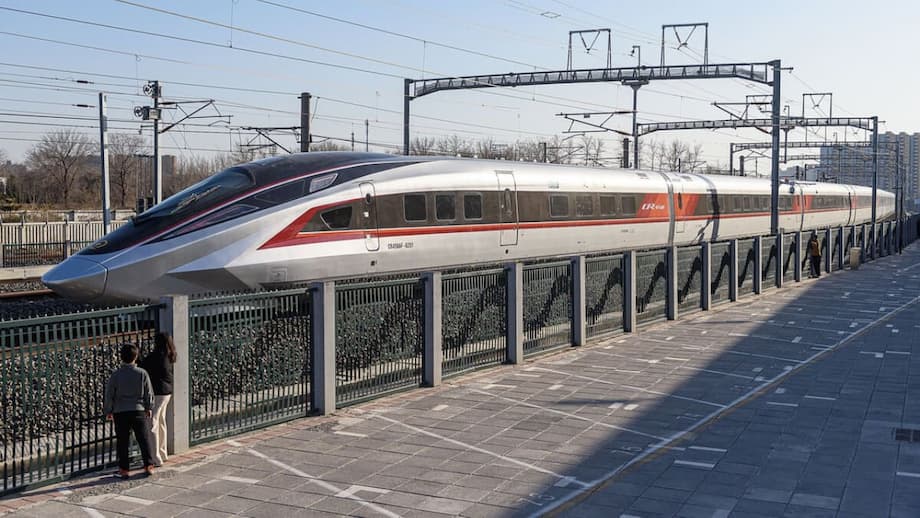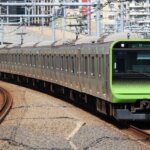China’s High-Speed Rail Revolution: Trains Overtake Planes on the Beijing–Shanghai Route
In a dramatic shift that is reshaping one of the world’s busiest travel corridors, China’s high-speed rail (HSR) between Beijing and Shanghai has surged past air travel in both passenger numbers and profitability. Once dominated by airlines, the 1,318-kilometer route now sees millions more travelers choosing bullet trains for their speed, comfort, and reliability. This transformation is not only altering the habits of business and leisure travelers but also setting a new global benchmark for intercity transport efficiency.
- China’s High-Speed Rail Revolution: Trains Overtake Planes on the Beijing–Shanghai Route
- Why Are Travelers Choosing Trains Over Planes?
- The Economic Impact: Profits, Competition, and Innovation
- Passenger Experience: Comfort, Connectivity, and New Services
- Technological Advances: The Next Generation of High-Speed Rail
- Broader Implications: Sustainability, Urbanization, and the Future of Travel
- In Summary
Last year alone, over 52 million passengers rode the Beijing–Shanghai high-speed railway, dwarfing the 8.6 million who flew the same route. The line’s fastest non-stop services cover the distance in just over four hours, turning what was once a full day’s journey into a swift, city-center-to-city-center commute. The implications for China’s transport sector, economy, and even pet owners are profound.
Why Are Travelers Choosing Trains Over Planes?
The reasons for rail’s dominance are multifaceted, blending technological innovation, passenger convenience, and evolving traveler expectations. High-speed rail offers:
- Speed and Frequency: With over 100 daily departures in each direction and trains running as often as every five minutes during peak hours, passengers enjoy unmatched flexibility.
- City-Center Connectivity: Unlike airports, which are often located far from urban cores, Beijing South and Shanghai Hongqiao stations are easily accessible, reducing total door-to-door travel time.
- Reliability and Punctuality: Trains are less affected by weather and airspace congestion, a chronic issue for Chinese airlines.
- Comfort and Amenities: Spacious seating, stable internet access, power outlets, and even business-class cabins with reclining seats and adjustable desks rival or surpass airline offerings.
- Stable Pricing: Train tickets are generally more affordable and less volatile than airfares, though airlines have responded with discounts and perks to stay competitive.
For business travelers, these factors are decisive. As Tong Lijun, a senior official at Shanghai Hongqiao Station, explained, “Business travelers value good punctuality, downtown connections, and the ability to stay connected.”
Comparing Travel Times and Experiences
While a direct flight between Beijing and Shanghai takes about 2 to 2.5 hours in the air, the total journey—including airport transfers, check-in, security, and potential delays—often matches or exceeds the 4.5 to 6 hours spent on a high-speed train. Trains depart from and arrive in city centers, eliminating long taxi rides and reducing transfer costs. Passengers can use mobile devices, enjoy scenic views, and avoid the stress of flight delays or cancellations.
For families and travelers with children, the train’s spacious cabins and freedom to move around are especially appealing. As one traveler shared on a popular forum, “With three young children, the train is less stressful and more comfortable than flying, even if the total time is similar.”
The Economic Impact: Profits, Competition, and Innovation
The financial success of the Beijing–Shanghai high-speed rail is as impressive as its ridership. In 2024, the line generated nearly $5.9 billion (42 billion yuan) in revenue and net profits of $1.79 billion (12.8 billion yuan), making it one of the world’s most profitable railways. This profitability supports ongoing upgrades, expanded services, and technological innovation.
Airlines, meanwhile, have been forced to adapt. The entry of HSR led to a significant drop in air travel demand—by as much as 34% on the Beijing–Shanghai route, according to academic studies. Airlines have responded by:
- Cutting fares, sometimes undercutting train ticket prices
- Offering limousine pickups and premium frequent-flyer programs
- Introducing flexible ticketing and cross-carrier partnerships
Despite these efforts, the rail sector’s advantages in punctuality, comfort, and convenience have proven difficult to match. The China Air Transport Association has warned that airlines risk losing even more ground as high-speed rail continues to improve.
How Has High-Speed Rail Changed the Aviation Market?
Peer-reviewed research reveals that the introduction of the Beijing–Shanghai HSR led to a sharp decline in both economy- and business-class air travel, with business-class demand falling even more dramatically. Airfares stabilized and converged across airlines, suggesting increased competition and possibly tacit collusion to maintain market share. Airlines serving the route have had to rethink their business models, focusing on service upgrades and operational efficiency.
For the broader Chinese economy, the rail line connects two megacities that together generate over 10 trillion yuan in annual economic output. Efficient, reliable transport between these hubs fuels business, tourism, and regional integration.
Passenger Experience: Comfort, Connectivity, and New Services
Modern high-speed trains on the Beijing–Shanghai line are designed with passenger comfort in mind. Business-class cabins feature fully reclining seats, adjustable laptop tables, and multiple charging outlets. Onboard Wi-Fi and stable internet access allow travelers to work or relax throughout the journey.
Railway operators have also introduced innovative services to attract new customer segments. In 2024, a pilot program began allowing pets to travel on select high-speed trains. Passengers can now book a spot for their cat or dog in a specially designed, climate-controlled container, with real-time monitoring and strict safety protocols. This service, though still in its trial phase, reflects the growing influence of China’s “pet economy” and the demand for pet-friendly travel options.
Pet Travel: A New Frontier for Rail and Air
The pet consignment service on the Beijing–Shanghai HSR is a first for China’s rail system. Owners must book in advance, provide health and quarantine certificates, and follow strict guidelines. While some pet owners welcome the convenience and lower cost compared to air travel, others express concerns about animal welfare, limited access during the journey, and pricing. Railway officials say the service will be refined based on passenger feedback, with the possibility of dedicated pet carriages in the future.
Airlines, too, have expanded pet-in-cabin services, with carriers like Hainan Airlines and China Southern introducing dedicated pet lounges and streamlined check-in procedures. The competition to attract pet owners is just one example of how both sectors are innovating to meet evolving traveler needs.
Technological Advances: The Next Generation of High-Speed Rail
China’s commitment to rail innovation is evident in its ongoing development of faster, more advanced trains. The CR450AF prototype, tested at 453 km/h in late 2024, is expected to enter trial operations at 400 km/h in 2025. Engineers have dubbed it a “nuclear power bank” for its advanced passive safety systems, which can cool critical components without external power.
Looking further ahead, China has unveiled a maglev (magnetic levitation) train capable of reaching 600 km/h (373 mph). This technology, which eliminates friction by suspending the train above the rails, could reduce the Beijing–Shanghai journey to just 2.5 hours. Even more ambitious is China’s Hyperloop maglev project, which aims to achieve airplane-like speeds and cut travel time between the two cities to as little as 90 minutes. While still in the testing phase, these innovations signal a future where rail could rival or even surpass air travel for medium- and long-distance routes.
How Does China’s High-Speed Rail Compare Globally?
With over 45,000 kilometers of high-speed rail in operation by the end of 2023, China boasts the world’s largest HSR network, far outpacing France, Japan, and Spain. The Beijing–Shanghai corridor is now a global model for safe, high-capacity, and profitable rail travel. Experts point to Japan’s Tokaido Shinkansen, which operates nearly 150 daily trains in each direction, as a benchmark for further expansion. As demand for efficient intercity travel grows, China is expected to increase train frequency and continue investing in next-generation rail technologies.
Broader Implications: Sustainability, Urbanization, and the Future of Travel
The shift from air to rail on the Beijing–Shanghai route reflects broader trends in sustainable transportation and urban development. High-speed rail offers significant environmental benefits, including lower carbon emissions per passenger-kilometer compared to air travel. As China’s cities expand and economic integration deepens, efficient rail links will become even more critical.
For travelers, the choice between train and plane is increasingly shaped by factors beyond speed—convenience, comfort, reliability, and even the ability to travel with pets all play a role. The competition between rail and air is driving both sectors to innovate, improve service quality, and respond to changing consumer expectations.
In Summary
- China’s Beijing–Shanghai high-speed rail now carries over six times as many passengers as airlines on the same route, with more than 52 million train travelers in 2024.
- Trains offer city-center-to-city-center service, high frequency, reliability, and amenities that appeal to both business and leisure travelers.
- The rail line is highly profitable, generating nearly $5.9 billion in revenue and $1.79 billion in net profit last year.
- Airlines have responded with fare cuts, premium services, and pet-friendly policies but continue to lose market share to rail.
- Technological advances, including 400 km/h trains and 600 km/h maglev prototypes, promise even faster and more efficient rail travel in the near future.
- New services, such as pet consignment on high-speed trains, reflect the sector’s commitment to meeting diverse passenger needs.
- The Beijing–Shanghai corridor is a global model for sustainable, high-capacity intercity transport, with implications for urbanization, economic growth, and environmental sustainability.












